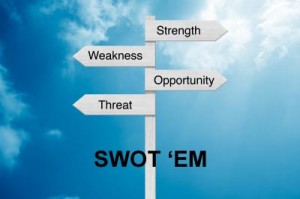Sears
Dear Mr. Ed Lampert,
When you took over as CEO of Sears I assumed you were hoping to make a lot of money and that you were the man for the job. As a small business and franchise consultant, I see a lot of guys who think they can handle the job. As a successful hedge fund manager, it is easy to see how you can take the leap from understanding spreadsheets to thinking that you had a handle on the pulse of retail. After all, there are spreadsheets at Sears.
I watched with great interest as Sears has turned from a family place to shop into a thrift store. That is what you were working to make it into isn’t it? A smart, successful man like you can’t walk around Sears and think that you wanted people with real money to spend any of it there, so it must be a call to gather all the Walmart shoppers who want to visit a mall setting. Thrift Store in a mall! Genius!
I especially like the way you keep payroll down so you can add more to the bottom line. It took me forever to find someone to allow me to spend over $100 on a new battery for my car. This, I further assume, was to make me wander around the store searching for an employee so I could find more things to buy. I threw out my back carrying the battery, but I did see lots and lots of things on clearance. I will have to add a new rule to my Bulldog Rules for Business – “Make ’em wait!”
Your new tagline is “Life. Well Spent.” I get it now. I can’t spend money at Sears, but I can spend my life trying to find someone to help me. That old tagline, “The softer side of Sears”, was for wusses. Make ’em work to give you money! That must be the best strategy.
When I did find someone to help me he was helping someone else and I had to wait more. More genius! When he was done and the other customer wandered away, I was told I had to wait more since he needed to put paperwork in a little bin somewhere behind a wall. I am not sure what that was for since all he said was, “I’ll be back”, but it was apparently more important than me and my money. Whatever you told that guy his job was, he did it well. I waited for more than 10 minutes and then left.
There are many places to buy a car battery, but there is only one Sears. I think you can be proud of that. No one can be as service-oriented as you and your team. I can tell that you have them all trained that way. The recruiting and training process must be intense. Proud!
As I finish my letter to you, Mr. Lampert, I want to thank you for showing me what it takes to run a big box retailer. I know I am not ready for that level of, um, success. As for you, my retail friend, be ready for more success as things seem to be moving faster than you anticipate. Your spreadsheets can’t tell you the future. They only look at what has already happened. But, from what I saw, I can tell you things will be exciting this year. Exciting!
Sincerely,
Bob Griffin – Bulldog-in-Chief
Business Bulldog, LLC
Bob@BusinessBulldog.com
P.S. I will be happy to talk with you personally anytime, Ed. As a fee for my services, you’ll have to buy me one of those sweet clearance shirts that I can’t look at directly without getting dizzy.



